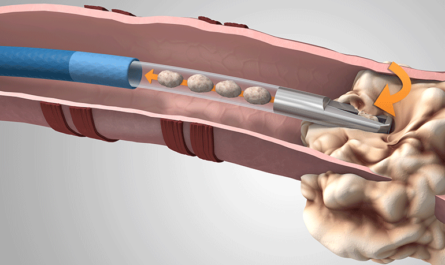Expanding Demand for Skilled Nursing Care
As life expectancy increases globally, the world population is experiencing rising numbers of older adults who require long-term medical care and support. According to the World Health Organization, the number of people aged 60 years and older is expected to more than double from 12% to 22% between 2015 and 2050. This growing aged population means there will be increased demand for facilities that can provide 24-hour nursing care and assistance with daily activities. Skilled nursing facilities, also known as nursing homes or care homes, play a vital role in caring for older adults and individuals recovering from illnesses or injuries who need help with tasks like bathing, dressing, medication management and rehabilitation therapies.
Many developed nations are already feeling the strain on their healthcare systems and devoted resources as their populations continue to gray. In the United States alone, it is projected that the population aged 65 and over will grow from 52 million in 2018 to 95 million in 2060. This surge is placing immense pressure on the current inventory of nursing home beds and staffing levels at long-term care centers. Meanwhile, developing countries that are undergoing rapid demographic shifts also face the challenge of establishing infrastructure and standards of care to support their swelling elderly cohorts who have significant care requirements. The Global Skilled Nursing Facility industry will be tasked with expanding capacity, innovating service delivery models and training more caregivers to meet the rising worldwide demand for assisted senior living communities in the decades ahead.
Regulating Quality of Care
As skilled nursing homes have become a mainstream solution for long-term care, concerns around quality assurance and resident safety have also increased. Both private organizations and public agencies have stepped up oversight efforts to establish minimum qualifications for facilities, monitor compliance with regulatory guidelines and investigate complaints of substandard care or abuse. In the U.S., the federal Nursing Home Reform Act of 1987 granted enforcement powers to the Centers for Medicare and Medicaid Services to regulate areas like staffing levels, clinical standards, resident rights and financial transparency. Similar licensure and inspection programs now govern skilled nursing facilities in the European Union, Canada, Australia and other industrialized regions seeking to protect vulnerable adults living in congregate residential settings.
However, maintaining consistent quality across the global long-term care sector presents ongoing challenges. Staff shortages, lack of specialized dementia training for caregivers, and inadequate funding models that impact resources available for resident care are issues plaguing nursing homes even in wealthy nations with stringent regulatory frameworks. The quality gap is more pronounced in developing Asian and African countries where eldercare policies are still maturing. As populations worldwide continue to rapidly expand at the higher age brackets, strategic collaboration will be crucial to disseminate evidence-based standards, share best practices and build local inspection capabilities to safeguard residents of skilled nursing facilities globally.
Models of Care Evolving to Meet Changing Needs
Demographic changes are not only increasing the sheer number of older adults requiring long-term services and supports, they are also altering the types of care needed. People are not only living longer on average but also staying healthy, active and functionally independent well into their 80s and beyond. This means skilled nursing facilities must evolve their traditional medical model focusing on care for very frail older residents to also address the needs of residents who are aging in place with chronic conditions but prefer to maintain independence.
More facilities are now offering special care units and programs for conditions like dementia, post-acute rehabilitation and palliative/hospice care. Technology innovations are also allowing some nursing homes to adopt “smart home” capabilities that automate tasks and enhance safety monitoring. The acceptance of assisted living arrangements paired with on-site nursing support is growing as a preferred alternative to traditional room and board models too. On a macro level, many health systems envision nursing home platforms integrating with value-based payment systems as part of a broader continuum of senior care that spans home, community and facility-based levels. The future success of skilled nursing facilities on a global scale will depend on their agility in tailoring programs and physical environments to a more diverse spectrum of senior needs.
Preparing the Next Generation of Caregivers
Given demographic realities, one of the foremost challenges facing the global long-term care sector is developing sufficient staffing capacity to match skyrocketing demand for assisted living services over coming decades. Traditional roles like certified nursing assistants and licensed practical nurses who provide most of the hands-on care in nursing homes are facing shortages exacerbated by aging workforces and noncompetitive compensation levels in many parts of the world. Meanwhile, evolving models of care are increasing requirements for specialized skills in areas like dementia care, palliative care coordination, rehabilitation therapies and use of remote monitoring technologies.
To prepare an adequately-sized healthcare workforce, training programs must be scaled up, career opportunities promoted to younger generations, and partnerships fostered between educational institutions and long-term care employers. Financial incentives in the form of tuition assistance, student loan forgiveness programs and workforce investment strategies may also be needed to recruit and retain talent. Use of virtual simulation, online/blended course formats and competency-based credentialing can help expand training capacity too. International knowledge-sharing on best practices for eldercare workforce development will be pivotal to equip the millions of new caregivers that will be demanded by population projections. Progress on this front will largely determine whether skilled nursing facility globally can fulfill their promise of dignified care for the rapidly expanding population of older adults in need of long-term services and supports.
Skilled nursing facilities play in providing necessary care for an aging global population. As life expectancies lengthen worldwide, long-term care demand is rising exponentially. Meeting this challenge will require ongoing efforts to regulate quality standards, evolve traditional models of service delivery, and prepare an adequately-sized new generation of caregivers. With strategic planning and cooperation across borders, the skilled nursing facility sector stands poised to support healthy aging for senior citizens around the world in the decades ahead.
*Note:
1. Source: Coherent Market Insights, Public sources, Desk research
2. We have leveraged AI tools to mine information and compile it.




